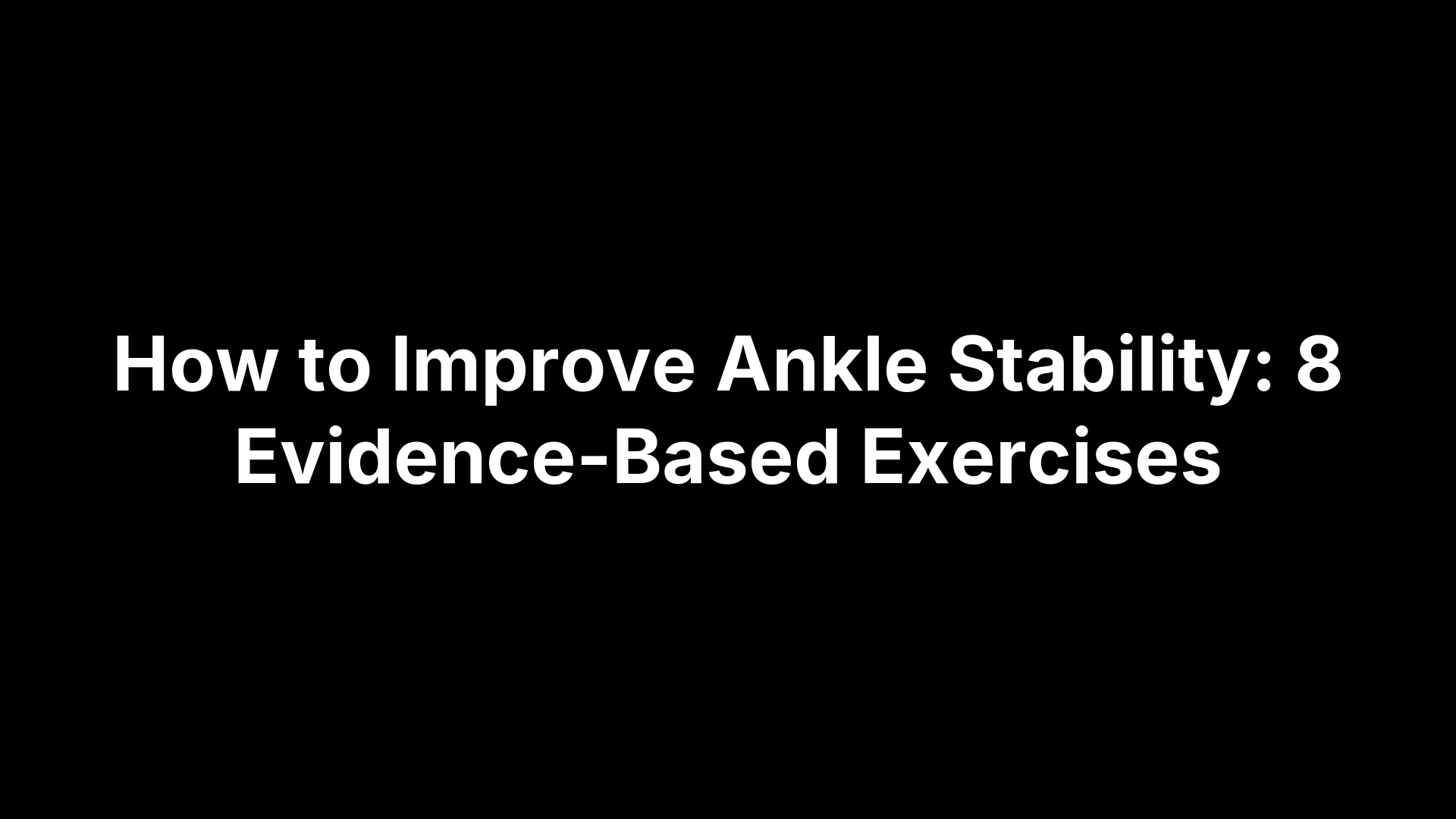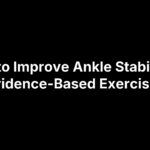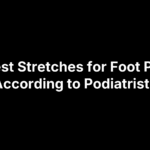Rolling an ankle mid-game hurts more than pride; it sidelines progress and can derail a season. The quickest, research-backed fix is a properly fitted brace that keeps ligaments where they belong while you cut, jump, and sprint. To help you pick the right one without guesswork, we tested ratings, medical studies, and athlete feedback to rank 18 stand-out ankle supports for every sport, budget, and injury level.
Ankle support comes in four main flavors: stretchy compression sleeves, lace-ups, semi-rigid hybrids, and fully rigid shells. Each answers a different need, and studies show wearing the right style can cut repeat sprain risk by up to 50 percent. Should you strap up for every practice? Not always; braces shine after a fresh sprain, during a high-risk tournament, or when chronic instability nags, but they’re overkill once strength, balance, and confidence return. Below you’ll see exactly how much support each product offers, how flexible it feels, which sports it suits, sizing quirks, and price. Scan the quick notes first, then click through to the brace that will keep you on the court, field, or track—no tape job required.
Ready to move? Let’s find your brace and keep you playing.
1. Zamst A2-DX Stabilizer — Steph Curry’s Go-To for Explosive Cuts
NBA highlight reels prove its pedigree: the A2-DX lets cutters load, plant, and pop without fear of re-sprain.
Why We Picked It
Endorsed by Curry, it delivers near-rigid lateral control minus tape hassles in heated playoff runs.
Stand-Out Features & Tech
Dual Exo-Grid stays, intersecting X-strap, and grippy lining prevent inversion yet keep jump flexion.
Best Sports & Injury Scenarios
Ideal for basketball, volleyball, and trail runs; tackles moderate-severe sprains and chronic instability.
Sizing & Fit Guidance
Measure 2 inches above ankle; choose left/right; expect one practice for break-in with mid-top shoes.
Pros & Potential Drawbacks
Pros: fortress-level stability yet toe-off freedom. Cons: high price and struggles squeezing into low soccer boots.
2. Med Spec ASO Ankle Stabilizer — The All-Rounder Loved by Athletic Trainers
The ASO is the ankle support most athletic trainers toss into travel bags because it balances stability, comfort, and cost. If you want one brace that can shuttle between the training room, turf, and hardwood, this is it.
Why We Picked It
Clinical studies show the ASO reduces recurrent sprains, and it’s the most-issued lace-up brace in NCAA programs.
Key Construction Details
Ballistic-nylon shell resists abrasion, figure-8 internal straps mimic athletic taping, and an elastic cuff locks laces in.
Ideal Use Cases
Return-to-play after mild-to-moderate sprain, prevention during high-risk drills, and multi-sport athletes sharing gear.
Fit & Comfort Tips
Start lacing at the forefoot, pull evenly toward the shin, then cinch the cuff over a thin crew sock.
Pros & Things to Consider
- Pro: adjustable compression, machine-washable, under-$40 price tag
- Consider: lacing takes time and can feel bulky in ultra-tight cleats
3. McDavid 195 Ultra Ankle Brace — Maximum Support in a Minimal Package
Feather-light but fierce, this brace tames rollover while preserving sprint speed.
Why We Picked It
At barely six ounces, its 195-degree figure-8 strap imitates professional taping—minus the trainer.
Feature Highlights
Single-layer polyester body, ventilated tongue, quick-pull crossover strap, and padded heel reduce heat.
Who It’s Best For
Ideal for football, lacrosse, pickleball players needing nimble cuts and moderate ligament restraint.
Sizing & Wearability
Order by regular shoe size; ambidextrous design slips into low-tops with no break-in.
Pros & Cons
- Pro: Effortless on/off, strong medial-lateral control, machine washable.
- Con: Sleeve can stretch over seasons; less rigid than plastic-stay braces.
4. DonJoy Velocity ES — Semi-Rigid Protection Trusted by Pros
When full-contact sports demand armor yet freedom to sprint, athletes reach for the Velocity.
Why We Picked It
Seen across NFL and NHL sidelines, it answers the PAA on “what ankle brace do athletes wear?”
Core Technology
Carbon-fiber side shells hinge on a low-profile axle, while SpeedWrap straps lock inversion.
Sports & Injury Spectrum
Ideal for football, hockey, post-op stabilization, and stubborn high-ankle sprains.
Fitting Pointers
Choose right/left; heat-mold footplate, then tension straps until snug without numbness.
Pros & Drawbacks
- Pro: rigid lateral control plus natural dorsiflexion.
- Con: premium price; setup learning curve.
5. Bauerfeind Sports Ankle Support — Medical-Grade Compression for Dynamic Play
Slide it on—this sleeve steadies ankles through medical compression, not bulky stays, making every cut feel sure.
Design & Materials
3D AirKnit applies 20–30 mmHg gradient pressure; viscoelastic pads guard ankle bones.
Best Applications
Ideal for running, tennis, soccer drills, mild sprains, and swelling control.
Sizing & Care
Measure narrow ankle girth; five sizes available. Machine-wash cold, then air-dry to preserve stretch.
Pros & Cons
- Pro: breathable knit fits in tight boots and boosts proprioception.
- Con: not rigid enough for Grade II/III sprains when worn alone.
6. Shock Doctor Ultra Gel Lace — Comfort-First Choice for Weekend Warriors
Weekend warriors want cushioning as much as stability—this brace delivers both.
Why We Picked It
Gel pads erase pressure spots common in bargain lace-ups.
Tech Specs
Ballistic-nylon shell, removable stays, dual figure-8 straps share load.
Sports & Injuries
Ideal for softball, rec hoops, and flag football; mild sprains.
Fit & Comfort Guidance
Pull tongue forward, lace snug, match sock thickness to kill slip.
Pros & Cons
- Pro: Gel zones stay comfy into extra innings.
- Con: Neoprene can run warm in August.
7. Nike Pro Ankle Sleeve 3.0 — Sleek Option for Compression & Warmth
7. Nike Pro Ankle Sleeve 3.0 — Sleek Option for Compression & Warmth
Why We Picked It
A favorite of runners and CrossFit athletes who need just a kiss of support without feeling taped to the floor.
Construction Highlights
Dri-FIT stretch knit targets compression zones, wicks sweat, and slides on in one smooth motion—no laces, straps, or stays.
When to Wear
Use during light training, early rehab, or any workout where rigid braces would slow you down.
How to Size & Layer
Wrap a tape around the arch and two inches above the malleoli; match to Nike’s S–XL chart. Wear under a thin crew sock to prevent sleeve creep.
Strengths & Limitations
- Strength: zero-bulk feel keeps ankles warm and muscles primed.
- Limitation: offers compression only—skip it for moderate or severe sprains.
8. adidas Techfit Ankle Support — Budget-Friendly Compression with Brand Cred
Need pocket-friendly ankle support for sports drills? Techfit delivers brand trust without wallet pain.
Why We Picked It
Under-$20 price from a global brand.
Feature Snapshot
Compression knit targets weak zones; silicone dots keep it planted.
Best For
Soccer cleats, spin class, HIIT circuits, everyday prevention.
Fit & Use
Slide on; internal grip print stops sleeve creep.
Pros & Cons
- Pro: ultralight, washer-safe.
- Con: few sizes, no acute-sprain support.
9. Under Armour Ankle Sleeve with Straps — Hybrid Between Sleeve and Brace
Think of it as a compression sleeve on steroids—slip it on for warm-ups, then cinch the straps when the game speeds up.
Why We Picked It
Gives athletes dial-a-support versatility without carrying two different braces.
Key Features
HeatGear moisture-wicking sleeve plus removable figure-8 elastic straps and antimicrobial treatment.
Ideal Scenarios
Football, lacrosse, or gym sessions where you need light compression some days and firmer restraint on others.
Fit Tips
Follow UA’s sizing chart; cross the straps from instep to heel, finish above the ankle bone to avoid circulation cut-off.
Pros & Cons
- Pro: Modular design—strap on for matches, go strap-free for recovery runs.
- Con: Straps can loosen during long plays if not anchored firmly.
10. Futuro Performance Comfort Lift — Everyday Support That Fits Under Work Socks
Why We Picked It
Pharmacy-shelf convenient and skinny enough for dress shoes, it offers gentle, all-day compression unnoticed.
Design Details
PowerKnit fabric, contoured heel pocket, smooth edges.
Best Uses
Walking, golf, desk-to-court moves, mild arthritis support.
Sizing & Care
Simple S–L sizing; hand-wash, air-dry to preserve stretch.
Pros & Cons
Pro: disappears beneath work socks.
Con: scant lateral control—add sturdier brace for high-impact pivots.
11. Mueller ATF2 Ankle Support — Patented Strapping That Moves with You
Mueller’s ATF2 stays flexible for sprints yet locks the moment your foot starts to roll—smart insurance for athletes who hate feeling shackled.
Build & Tech
- Nylon shell with slim side stays
- Internal ATF2 strap tightens only during inversion, relaxes in neutral
Best Sports
Volleyball, basketball
Fit & Adjustment
Lace from toe up, then secure the hook-and-loop cuff over a thin crew sock.
Pros & Cons
- Pro: Dynamic restraint without blocking plantar-flexion
- Con: Velcro can snag socks over time
12. Ultra Zoom Ankle Brace — Formable Shell that Adapts to Your Foot
12. Ultra Zoom Ankle Brace — Formable Shell that Adapts to Your Foot
Why We Picked It
Performathane shell heat-molds for a custom fit yet stays semi-rigid when you cut.
Feature Line-up
Hinged cuff, anti-slip pad, and a single quick strap keep the brace locked in.
Who Needs It
Ideal for volleyball, pickleball, and tennis athletes wanting high protection without hot spots.
Fitting Guide
Wear the left/right model for two practices so the shell conforms; works best in mid-tops.
Pros & Cons
- Pro: custom feel, washable, 1-year warranty
- Con: bulkier than knit sleeves
13. Cramer Active Ankle T2 — Classic Rigid Brace for High-Impact Landings
13. Cramer Active Ankle T2 — Classic Rigid Brace for High-Impact Landings
Why We Picked It
Trusted for 30+ years in collegiate volleyball and gymnastics programs for rock-solid rollover defense.
Core Construction
Rigid polypropylene uprights, EVA padding, and a single StrapLok strap lock the joint.
Sport & Injury Match
Best for jump sports and athletes with lax ligaments or repeat Grade II sprains.
Fitting & Shoe Compatibility
Slides into mid- or high-tops; warm the uprights to contour narrow ankles.
Pros & Cons
Pro: maximum torsional control, bomb-proof build.
Con: restricts plantar-flexion and feels bulky.
14. Vive Lace-Up Ankle Brace — Amazon Bestseller with Budget Pricing
Why We Picked It
At $20–$25 and thousands of reviews, this lace-up dominates Amazon’s ankle-support charts.
Features
Mesh shell, dual figure-8 straps, removable stays tailor support.
Ideal Users
Weekend ballers and high-schoolers needing reliable, cheap ankle backup.
Fit Tips
Pull out stays for narrow shoes; size by shoe length.
Pros & Cons
- Pro: adjustable support under $25
- Con: fabric frays sooner than pricier models
15. Copper Compression Recovery Sleeve — For Swelling Control Between Games
Copper-infused compression keeps swelling down and odor away between games.
Material & Design
4-way knit, 20–30 mmHg, 88 % copper yarn—odor control built-in.
Best Use Cases
Post-run recovery, mild edema, overnight wear.
Sizing & Wear
Measure ankle & calf, pull on heel-first; seamless design prevents chafing.
Pros & Cons
Pro: thin under any shoe.
Con: little ligament restraint—pair with a brace for high-impact cuts.
16. BraceAbility Rigid Ankle Walker Boot — Post-Sprain Protection for Athletes in Rehab
When a wrap won’t cut it, this slim walker boot lets you ditch crutches yet still cocoon the ankle while torn ligaments rebuild.
Why We Picked It
Bridges the gap between a hard cast and the slimmer braces used for return-to-play.
Design Elements
Semi-rigid plastic frame, rocker sole for smoother stride, twin air bladders tame swelling.
When to Use
Grade II–III sprains, stress fractures, or early post-op phases that allow partial weight-bearing.
Fit & Usage
Pump air until snug—not numb—then rehearse slow heel-to-toe steps to relearn gait.
Pros & Cons
- Pro: Faster, safer mobility than crutches or a fixed cast
- Con: Too bulky for competition; you’ll need a lower-profile brace before game day
17. Zenith Athletics Lace-Up Brace — Reinforced Stitching for Rough Play
Hard hits shred lesser braces; this one refuses.
Why We Picked It
Built like a lineman’s jersey, the $30 brace survives grabs, mud, repeated washes.
Construction Highlights
Ballistic nylon shell, double-stitched seams, detachable stays, oversized figure-8 straps.
Best For
Rugby scrums, football trenches, wrestling mats.
Sizing & Durability Tips
Size by shoe. Rinse, air-dry; swap straps yearly.
Pros & Cons
Pro: tank-level durability, customizable support.
Con: adds weight in cleats.
18. Tuli’s Cheetah Heel Cup & Ankle Support — Dual-Benefit for Dancers & Gymnasts
Why We Picked It
Shock-absorbing heel cup plus sleeve—one piece cushions landings and steadies ankles.
Key Features
- Multi-cell heel cup disperses impact
- Neoprene sleeve with hook-loop strap
Perfect Scenarios
Tumbling, beam dismounts, cheer jumps, Sever’s-disease prevention.
Fit Guidance
Wear barefoot/thin sock; size by weight (<100 lb, >100 lb).
Pros & Cons
Pro: dual heel-ankle protection without shoes.
Con: fixed compression; not for field sports.
Stay Supported, Stay in the Game
The right ankle support is never one-size-fits-all. A slim compression sleeve may be perfect for a 5K shake-out run, while a semi-rigid brace is the smarter play for a high-flying volleyball tourney or a fresh Grade II sprain. Match the brace to three pillars—sport intensity, current injury level, and your comfort preferences—and you’ll slash re-sprain odds, keep swelling at bay, and step onto the court with full confidence instead of quiet doubt.
Still unsure which category you fall into or need a custom-molded option your shoe can’t swallow? Book a professional fitting or sports-injury evaluation with the foot and ankle specialists at the Achilles Foot and Ankle Center. Support done right keeps you playing the game you love longer—start today.






